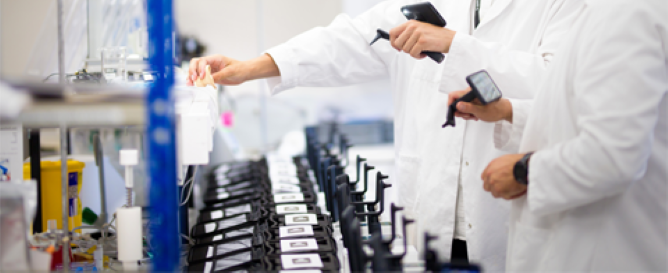Sensing the Water in the Air

Staying Frozen but Vitrified
November 14, 2018
TempGenius Alert Schedule
January 22, 2019To understand what a temperature-humidity sensor does, one must understand what humidity is. Humidity is the measure of water in the air, or and another mix of gases. Humidity Sensing is vital in a controlled system like an industrial process. Being able to monitor humidity is vital to many industries. In the medical field, being able to monitor humidity is required for equipment, such as incubators and sterilizers. It is essential in pharmaceutical processing to have temperature and humidity monitoring.
Humidity sensors can be used to indicate the moisture levels of the environment. The measurement typically used for humidity is Relative Humidity(RH). RH is a relative measurement as a function of temperature. Humidity can be measured using electronic hygrometers or humidity sensors. They are divided into two categories, ones that use capacitive sensing principles and the others use resistive effects.
Capacitive sensing sensors use a hygroscopic dielectric material inserted between a pair of electrodes creating a capacitor. Typically, these types of sensors use a polymer as a dielectric material with a dielectric constant ranging from 2 to 15. Without moisture, the dielectric constant of the hygroscopic dielectric material and the shape of the sensor determine the capacitance amount.

The dielectric constant of water vapor is about 80 at room temperature, this is greater than the constant of the sensor dielectric material. This way the absorption of water vapor by the sensor causes an upsurge in sensor capacitance.
When they meet in the middle the amount of moisture present in hygroscopic material hinges on both the ambient temperature and the ambient water vapor pressure. This is the same for the hygroscopic dielectric material in the sensor.
Resistive sensing sensors receive variations in the resistance value of the sensor element in response to the variations in the humidity. A dense film conductor of precious metal and ruthenium oxide is printed and calcinated like a comb to make an electrode, then a polymeric film is applied on the electrode. This becomes a humidity sensing film because of the movable ions. Changes in impedance happen due to the change in the quantity of movable ions.
Capacitive sensors can measure RH from 0% to 100% and need to be calibrated frequently. With resistive sensors, it can be difficult to measure anything below 5%RH. The change is impedance is too high and it is difficult to control because of the temperature effects the properties significantly.
In conclusion, capacitive sensors are more widely used for temperature and humidity monitoring and are relied upon in many industries. It is vital to be able to control the humidity in these industries and using the right type of humidity sensor is crucial. More important is considering the monitoring, it is pointless to measure something if you do not use the information gathered from that measure to take corrective actions.
